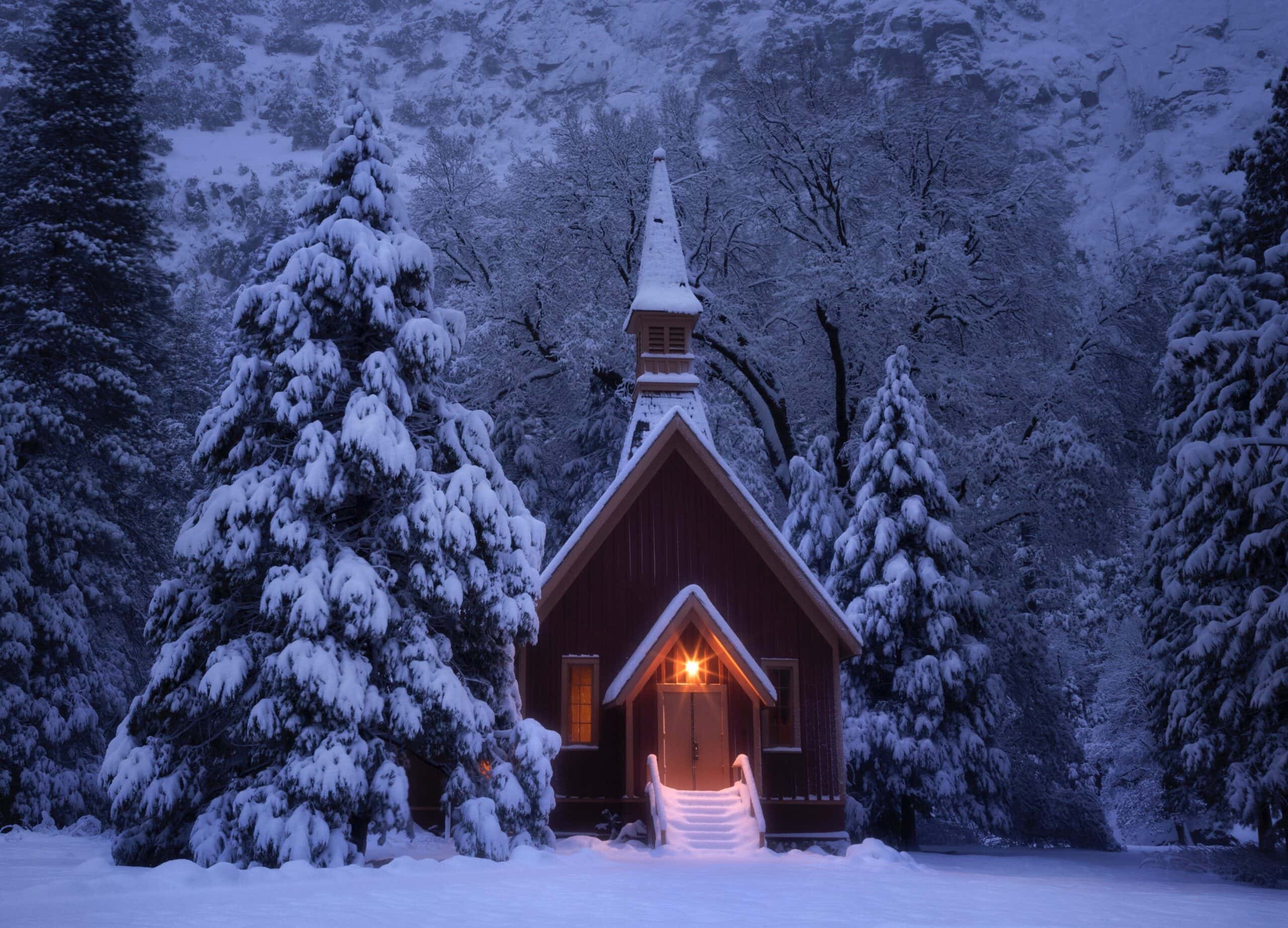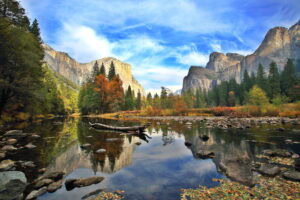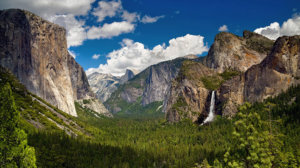When thinking about winter photography, Yosemite Mariposa County offers the most awe-inspiring landscapes. From ice-crusted waterfalls to iconic rock formations hugged by clouds, from rolling green ranchland dotted with galloping horses to an unusual winter phenomenon known as the Yosemite Firefall, the cool brilliance of Yosemite Mariposa lends itself to brisk pics and muted masterpieces alike. Add to that an all-season highway and fewer visitors, and Yosemite Mariposa County becomes one of America’s top destinations for winter photography.
Jim Richardson, the esteemed lensman for National Geographic, has a professional tip he likes to share: “if you want to be a better photographer, stand in front of more interesting stuff.” And what better way to stand in front of interesting stuff than a winter visit to Yosemite Mariposa?
Invigorating Venues
Whether by car or on snowshoes, above the snow line or throughout its history-rich foothills, Yosemite Mariposa County features a number of top spots where guests visiting in the winter months can capture that inspired image worthy of a gallery wall.
Yosemite Valley
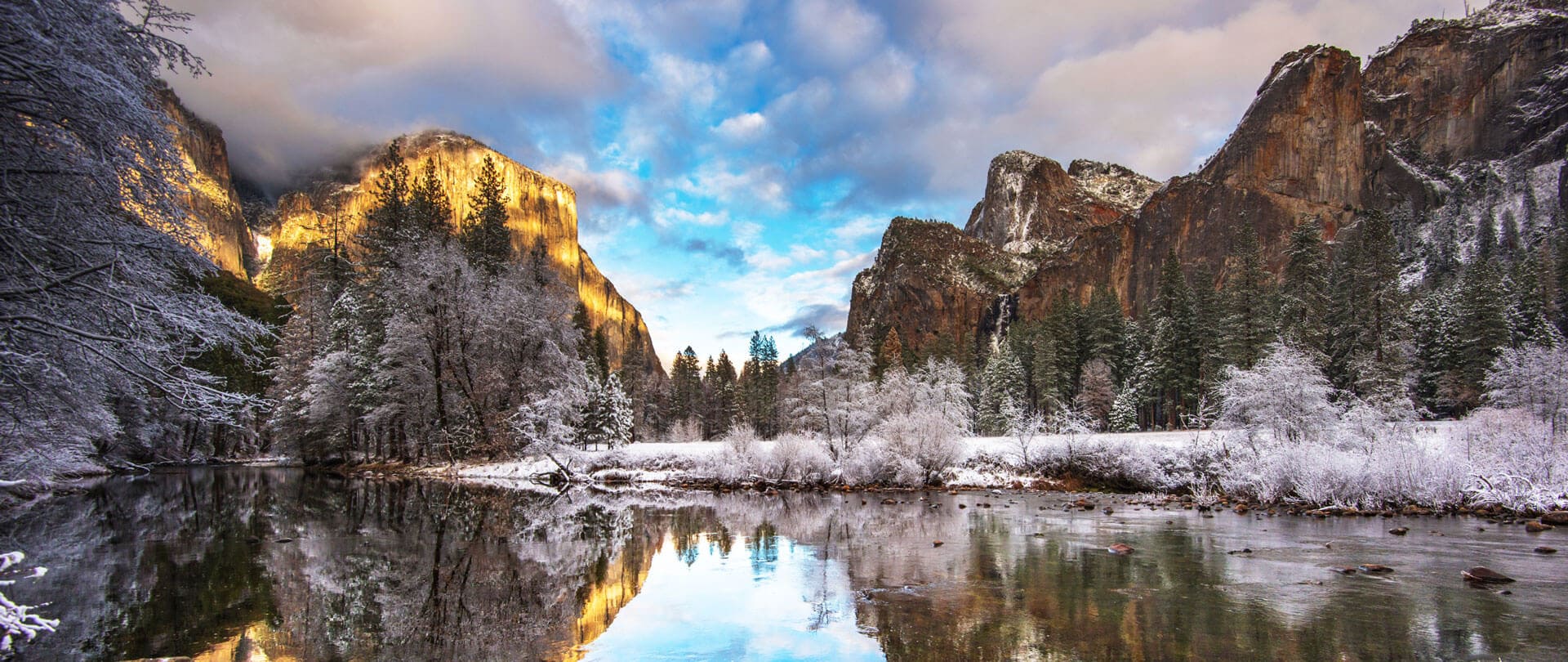
Perfectly placed with its east-west orientation, Yosemite Valley collects winter weather between its steep walls creating a mood that’s both evocative and ever-changing. Add to that a diverse mix of flora and fauna complimented by the meandering Merced River as it runs through El Capitan Meadow, or the beauty of Yosemite Falls with a morning lacework of ice radiating from the main column of water. These are scenes straight out of a photographer’s dream. Pick your favorite subject, the best time of day for the light to hit it, and you’re golden.
Tunnel View
While exploring Yosemite Valley, be sure to stop and see Tunnel View. From this gorgeous vantage point just above the west end of Yosemite Valley, you can see El Capitan, Half Dome, and Bridalveil Fall all in one glorious shot.
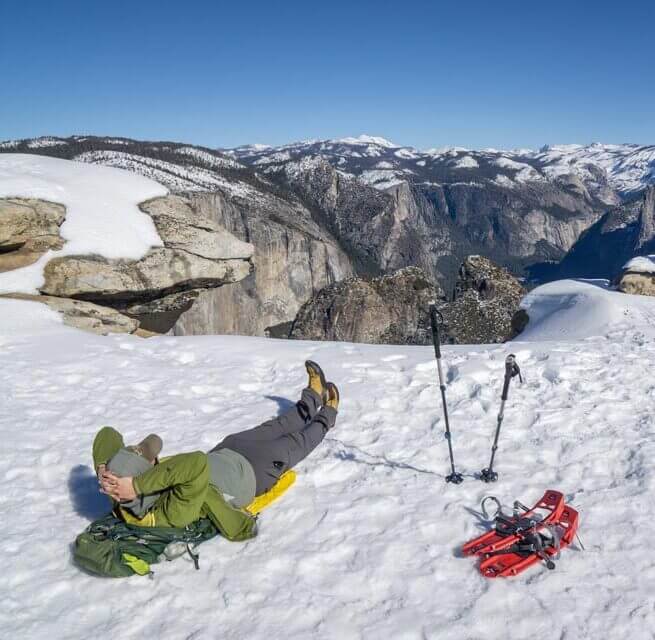
Dewey Point
Perched high on the southern rim of Yosemite Valley, Dewey Point is a great choice for dedicated photographers who want an up-close-and-personal view of ice-crusted El Capitan. Depending on winter conditions, you can cross country ski, snowshoe or hike the snow-covered Glacier Point Road past Badger Pass Ski Area. Once there, expect unmatched views of fog and clouds flowing between the cliffs below, not to mention the distant snow-capped peaks of the Yosemite high country.
Hetch Hetchy Valley
The road less traveled, doubly-so in winter weather, Hetch Hetchy was passionately described by John Muir as “one of Nature’s rarest and most precious mountain temples.” From Hetch Hetchy Reservoir’s rocky frame (where waterfalls plunge in spring) to its glassy surface reflecting winter clouds billowing past, this peaceful oasis is located on the northern boundary of Yosemite National Park and offers photographers willing to hustle a chance to get away from the bustle.
Goat Meadow Snowplay Area
One of the most woohoo-worthy snow play hubs in Mariposa County, Goat Meadow is located between Fish Camp and Yosemite’s southern entrance just off Highway 41. Photographers have a choice here: snapping action shots of fast & furious sledders careening down the slopes, or strapping on snowshoes and exploring the moody serenity of the surrounding Sierra National Forest. Very near Goat Meadow and also very worth the visit is Summerdale Campground where wildlife photography options are abundant. You can spot beaver’s building dams in the creek, hawks hunting prey and foraging deer.
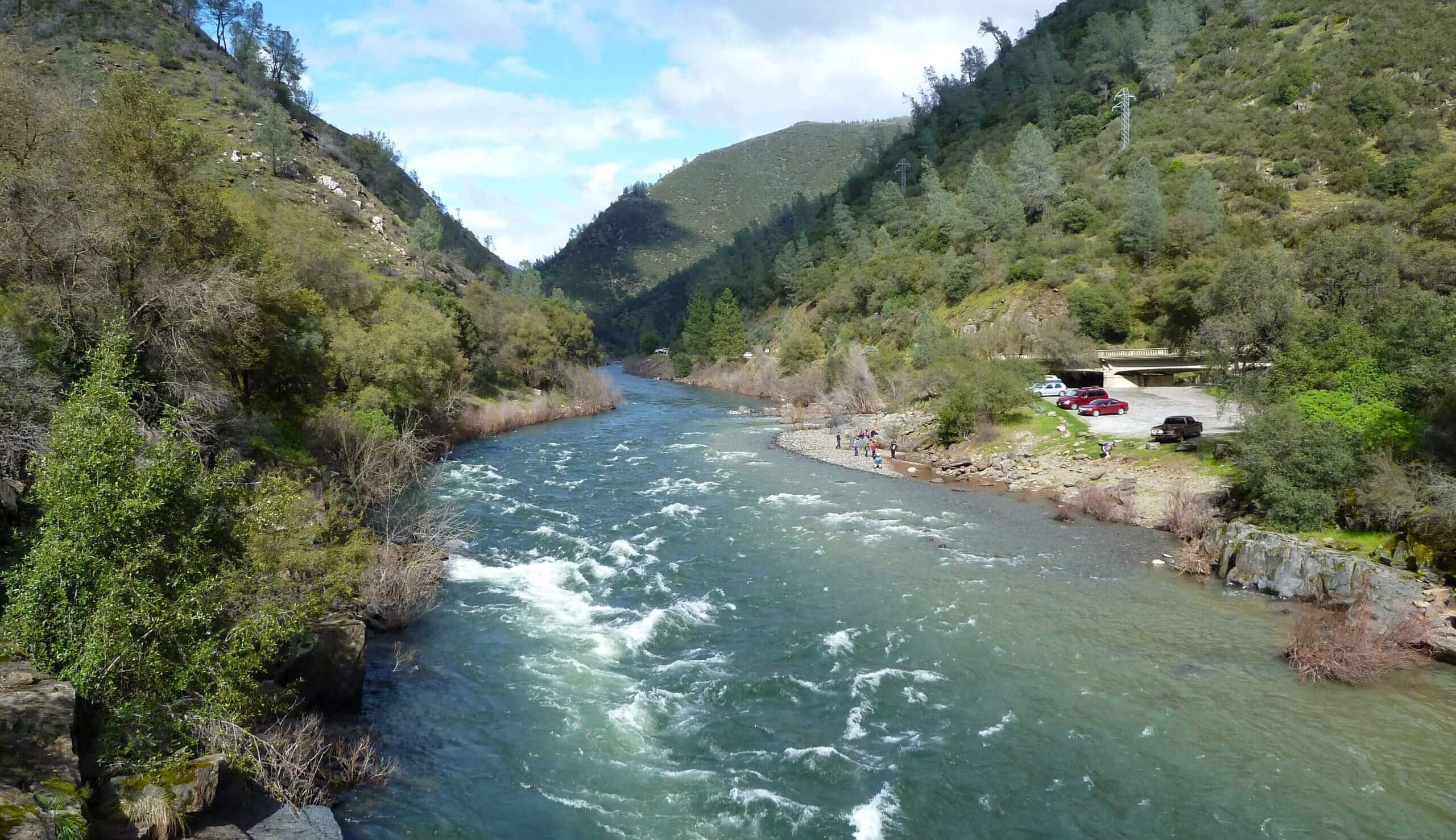
Merced River Canyon/Highway 140
The steep, scrubby slopes of the Merced River Canyon are starkly beautiful. As all-season Highway 140 climbs steadily towards Yosemite’s western entrance with the river by your side, the transition from foothill to mountain becomes evident. The photographs here are moody, capturing California’s rugged, can-do spirit, while late winter/early spring brings an explosion of organic color along the Hite Cove Trail, one of the Sierras’ top destinations for wildflowers.
Lake McClure & Lake McSwain
Nestled in the oak-studded Sierra foothills on the western edge of Mariposa County, these freshwater siblings are a great spot to photograph rainbows arcing overhead, or even hang gliders soaring the heavens. Know mostly for their fishing prowess, Lake McClure & Lake McSwain are a short drive from the Bay Area and easily accessible in winter. For action shots and tasty Go-Pro telenovelas, try the Exchequer Mountain Bike Park for all its shredding glory.
Hornitos & Catheys Valley
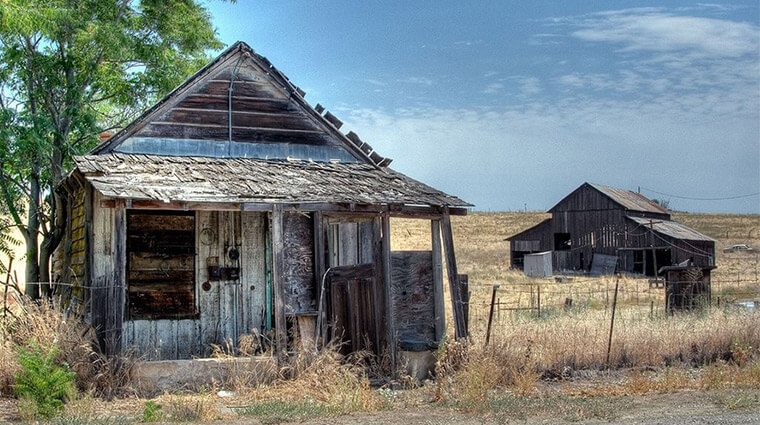
This rolling ranch land in western Mariposa County greens up real nice with the rain on a winter day, creating unmatched rural landscapes as leaf-challenged oaks and free-range livestock dot the frame. For haunting pics of historic ruins, try the ghost-town-adjacent villa of Hornitos. With a current population of 66, Hornitos was once home to 10,000 people during peak Gold Rush and the crumbling walls of famed chocolatier Domenico Ghirardelli’s general store are still standing.
Town of Mariposa
The perfect hub for your winter shoot, the Gold Rush town of Mariposa offers historic architecture and a central casting of local characters who proudly call this outpost home. From the historic courthouse to the abandoned jail, from ranchers rubbing elbows with artists at local cafes to the Stockton Creek Preserve where photographing birds is just a telephoto lens away
Finding Mood Lighting for Yosemite Winter Photography
The winter light in Yosemite Mariposa evokes a certain mood, which is ideal for Yosemite winter photography. The long shadows and stark contrasts weave through the forest and shimmer over pure mountain water whether it’s running free or frozen white. The deep saturation of the Sierra sky is an endless blue, and the massive granite walls glint more shades of gray than any steamy bestseller. Here are few things to consider when shooting landscapes in winter:
- Cloud Play: billowing winter clouds set against blue Sierra sky add depth to the frame. No two clouds “” or photos “” are alike!
- Frozen Fun-dra: frost and snow “” whether in meadows, on tree branches or along riverbanks “” add a reflective quality that gives winter pics a crystalline shimmer.
- Rock Opera: wet granite creates its own “flat” shadows streaking down the cliffs.
- Mirror Play: lower winter flow in the Merced River creates the perfect conditions for reflection photography.
- Animal House: a less-populated landscape means animals come out to play, providing prime conditions for photographing winter wildlife in Yosemite.
- Mist-Kissed: The Mist Trail leading up to Vernal Fall isn’t the only place to find water-ful drama. Tule fog along the western flank of Mariposa County creates an ethereal blanket where photographers can play both above and below the covers.
- Boomtown Bloomtown: late winter brings the first wildflowers to the lower elevations, inducing a parade of color.
When Is the Best Time To Visit Yosemite for Photography? Witness A Winter Phenom
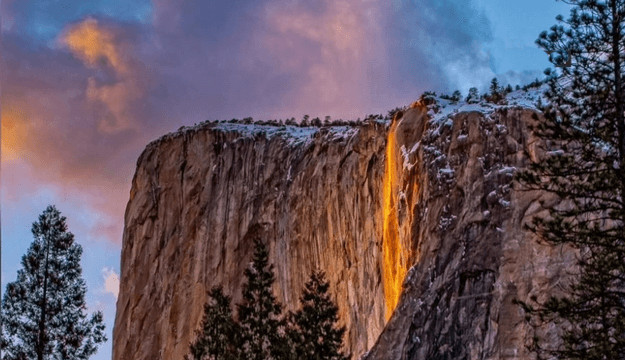
Of course Yosemite can be enjoyed during any season and at all times of year. However, for visitors willing to map out their photo expedition and chase some truly unique light, there is a winter phenomenon that can’t be found anywhere else: the natural Yosemite Firefall.
Not to be confused with Glacier Point’s man-made, ember firefall that began in 1872 and ended in 1968, the Yosemite Firefall is a natural phenomenon occurring the last two weeks of February when the weather plays nice and conditions cooperate. In the hours before sunset, photographers from all over the world set up shop beneath the sheer granite face of El Capitan as the shadows inch closer to the 600-foot ribbon of snowmelt known as Horsetail Fall. Waiting…waiting….then suddenly a shock of mock lava lights up fiery orange-red as it plummets off the side of El Capitan, and the paparazzi snap in awe. Because conditions change from year-to-year, every sequel is different making the Yosemite Firefall an addictive pilgrimage for Instagrammers and professional photographers alike. Renewable resources, indeed.
Fun fact: Ansel Adams took the first widely-viewed pic of the Yosemite Firefall in the 1930’s. The amazing part? Even though the photo was shot in black & white you can still feel the neon glow!
Winter Landscape Photography Pro Tips
Capturing just the right mood in a landscape photo takes careful consideration in choosing the right shutter speed or exposure compensation. At the same time, creating the right mood for the landscape photographers themselves includes being prepared for the winter conditions and managing your internal energy levels. With that in mind, here are some pro winter landscape photography tips to keep in mind when visiting Yosemite:
- Gear up in winter with a tripod and telephoto lens, not to mention a warm jacket, waterproof boots and a headlamp (for the early setting sun).
- Shoot in RAW file format which provides more digital information for better editing.
- Always check the weather “” it impacts everything from road conditions to comfort and personal safety. And have a lower elevation plan if the high country is too snowy.
- Fuel up at one of Yosemite Mariposa’s many restaurants, whether a pre-shoot breakfast, a midday lunch break, or post-shoot dinner celebration. Top off your thermos at a local cafe and get some road snacks, too!
- Make the most of Yosemite Mariposa’s wide range of accommodations and extend your photoshoot to cover all elevations and diverse landscapes.
- In addition to keeping your batteries warm and using a clear bag to keep your camera dry, try these 13 tips for photographing in the snow.
- Post your photos and tag #yosemitenation to join the Yosemite Mariposa pixel brigade and give yourself a chance to be featured on our @YosemiteNation Instagram.
Finally, don’t be afraid to get off the beaten path and explore outside of Yosemite. The untapped beauty of Mariposa County goes far beyond the Park’s boundary!

